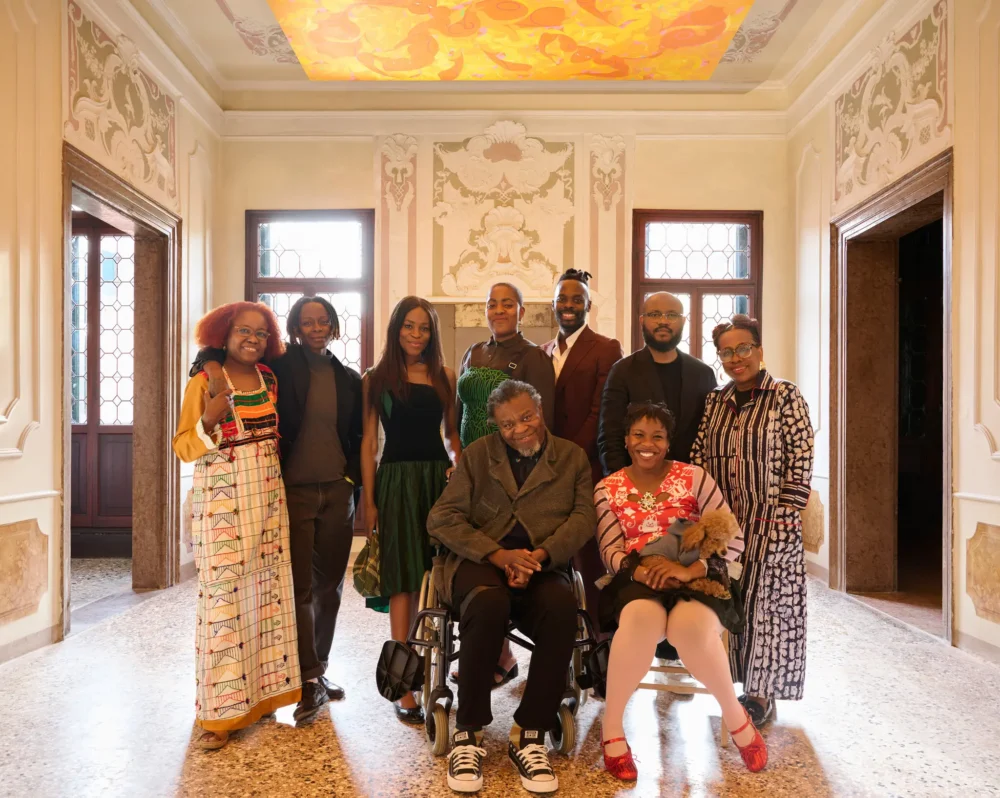
- Source: THE NEW YORK TIMES
- Author: EDITORS
- Date: APRIL 24, 2024
- Format: DIGITAL
Rotting Fruit, an Animatronic Mouse and Other Highlights of the Venice Biennale
A tour of the international exhibition, which opened last week and runs through November.
The Venice Biennale, the art world’s most prestigious exhibition, opened last week to some fanfare, some criticism and a number of protests. Viewers generally look to the Biennale as a reflection of its time, and this one arrived at a fraught moment in history defined by political unrest and distrust for traditional systems of power. (And not for nothing, Indigenous and African artists, historically underrepresented in Venice, are notably more visible than in previous iterations of the show.) Here, a look at some of the standouts from the 2024 edition.

The artists and curator of the Nigeria Pavilion, from left: Fatimah Tuggar, Toyin Ojih Odutola, Aindrea Emelife, Onyeka Igwe, Tunji Adeniyi-Jones (whose work is visible on the ceiling), Abraham Oghobase, Ndidi Dike and (seated), Yinka Shonibare and Precious Okoyomon.
The Nigeria Pavilion
For the country’s second-ever pavilion in Venice, eight Nigerian artists installed site-specific works at the Palazzo Canal in a show organized by the London-based curator Aindrea Emelife. Their projects — including Yinka Shonibare’s replicas of the Benin Bronzes that were plundered by the British in the late 19th century, and a sculpture by Ndiki Dike commemorating protests against police in 2020 — look at the violence of colonial history, as well as charting a path out of it.

